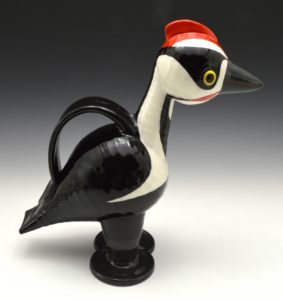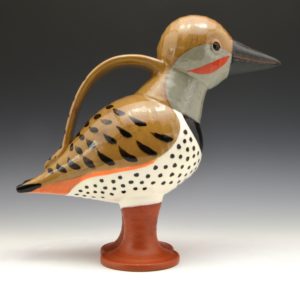Members of the BC Potters’ Guild have been invited to submit work for a September show which will illustrate parts of the artist’s process. Potters need to know so much about the huge variety of ways of working with clay. Starting with hand-building or wheel-throwing, the potter then needs to understand ways of finishing their work, whether with the use of slips, underglazes and glazes, or with a variety of firing methods; pit, electric, gas, wood, raku, reduction or oxidation, and then deal with function or not.
So I’m looking forward to seeing what work will have been included in the exhibition and will be interested to read the required explanation of each person’s methods along with photos which will illustrate parts of our varied and often laborious and time-consuming processes.
The Gallery of BC Ceramics presents The Potters Guild of BC’s Fall Member Exhibition,
‘Testing, Testing, 1…2…3’
Come learn more about the different processes!
Opening Reception: Thursday September 1st, 5-7pm
Exhibition Dates: September 1 – 24, 2016
Sunrise Water Bird Sculpture by Jean Pederson Ellis
I have taken my two latest multi-part jugbirds into the gallery for this show and I hope that they will serve to illustrate the many steps I need to take to create my own particular jugbirds. Here is my second Pileated Woodpecker and a new fellow, a Northern Flicker, each of which is assembled from five wheel-thrown sections.

10 1/2″ x 10″ x 4 1/4″

10 1/4″ X 11″ x 4 1/2″

My little text explains most of the process of making these guys and I have let the gallery have these four photos of their creation (taken by Alan).
“In an ECIAD summer course Jeff Oestreich encouraged us to re-think traditional pottery shapes, to get away from replicating factory designs. My unusual jug forms have evolved from those ideas.
The next summer Walter Ostrom brought NSCAD’s preference for using red earthenware clay, together with his huge research into maiolica to ECIAD. Suddenly we had the option of using a huge variety of colours. He also introduced the idea of applying colourful slips to leather-hard work, with painting, slip-trailing and sgraffito.
I adopted earthenware for my graduation work and developed a large palette of boldly coloured slips. I found I could add 15 grams of commercial stain to 100 grams of dry slip mix (even 50/100 for my black slip!). My work is finished with a clear, durable, food-safe glaze.
These are the steps to making these somewhat functional jugbirds:
* Several pre-planned sections are thrown on the wheel
* When somewhat firmer the bases are trimmed on a custom-thrown ‘chuck’ to round out the head and body parts
* The parts are adjusted and fitted together and then assembled by scratching the joining areas and applying slip
* The pulled handle is applied and the piece is left for 24 hrs under plastic to even out the drying
* With reference to real birds, the piece is painted with my coloured slips, some underglazes and finally terra sigillata on the feet.
* Bisque-fire to 1816F or 991C, cone 06
* Glaze and fire to 1922F or 1050C, cone 04″




The show opens tomorrow evening at the Gallery on Cartwright Street, Granville Island, from 5-7pm.
In an earlier blog I had worried about a mad rush to get to this opening and then to Chris Weaver’s talk at Shadbolt Centre. But luckily I got the time wrong – it is 5 – 7pm, not 6 – 8pm as I thought, so there should be time for the half-hour drive to Burnaby for 7pm. Should be an interesting evening!


Pingback: Clay Blog Review: September 2016 - Pottery Making Info